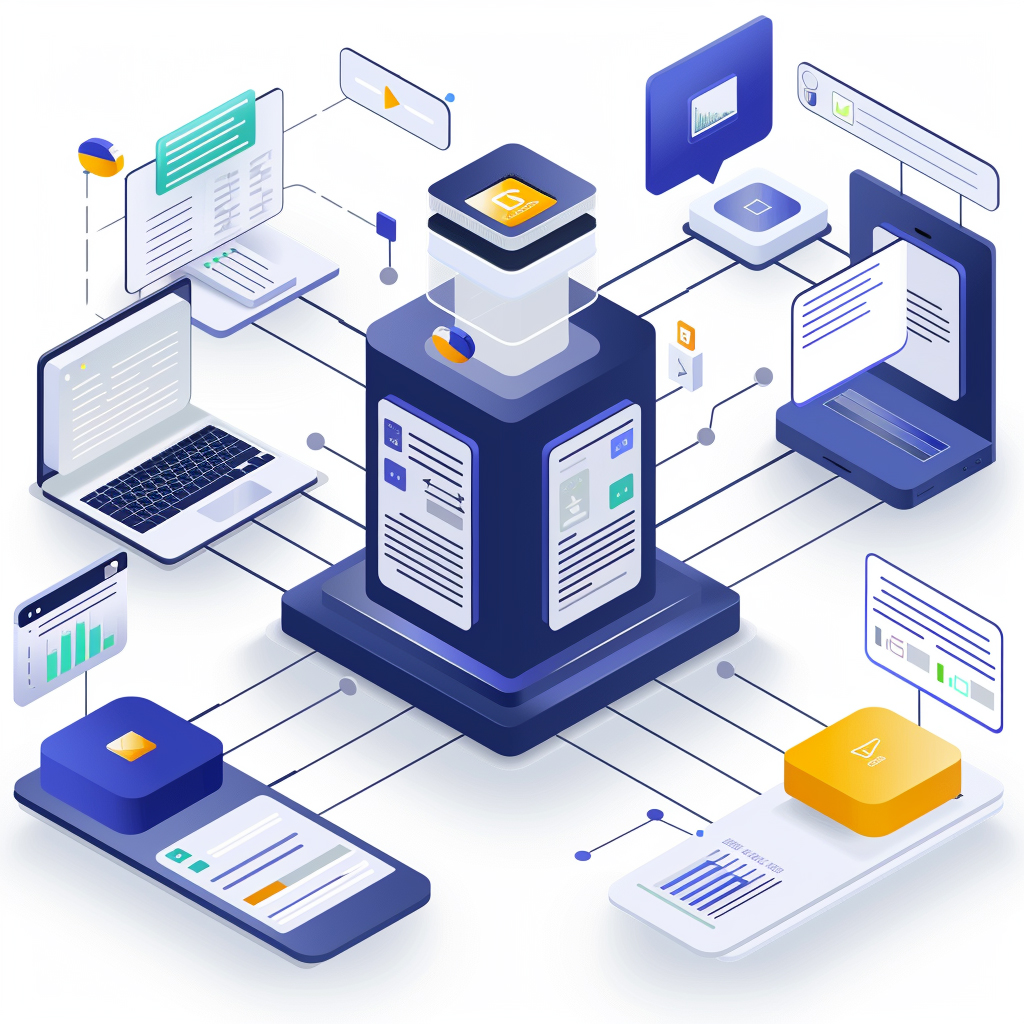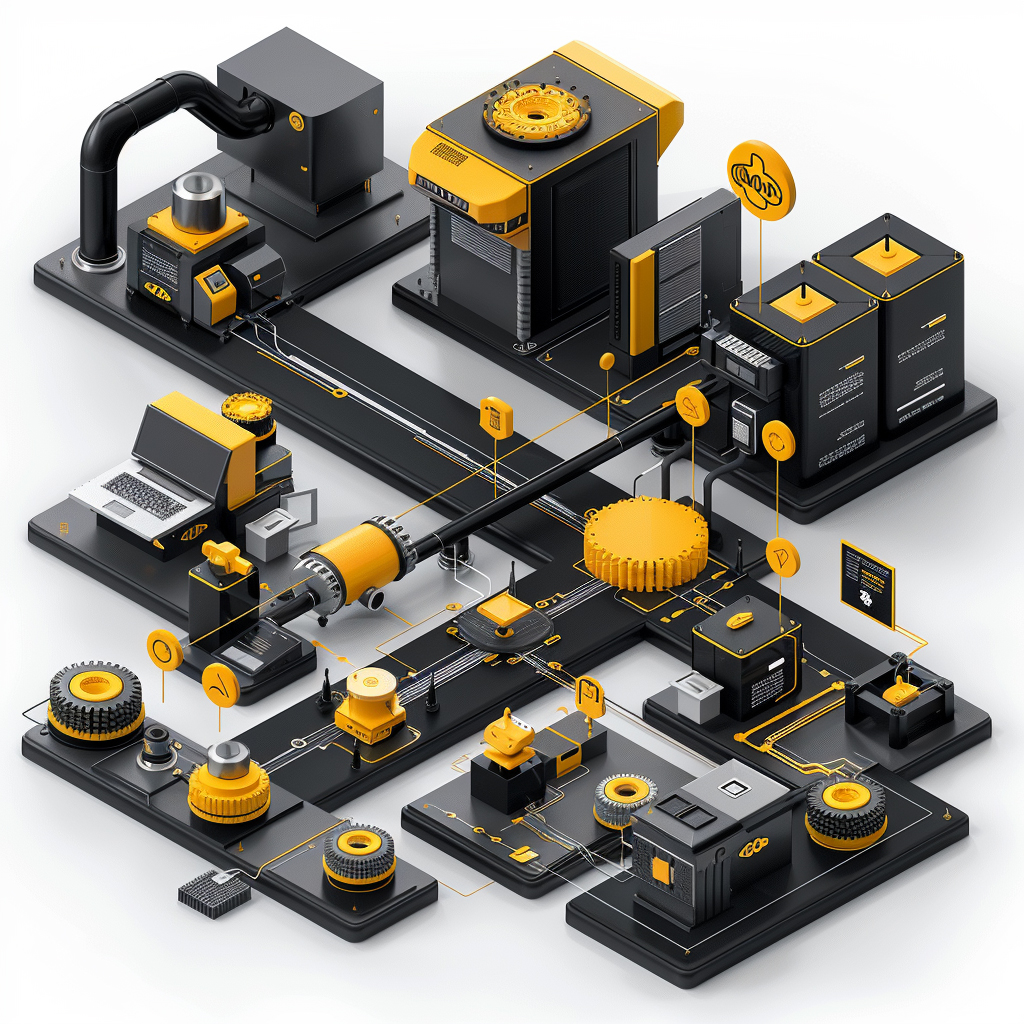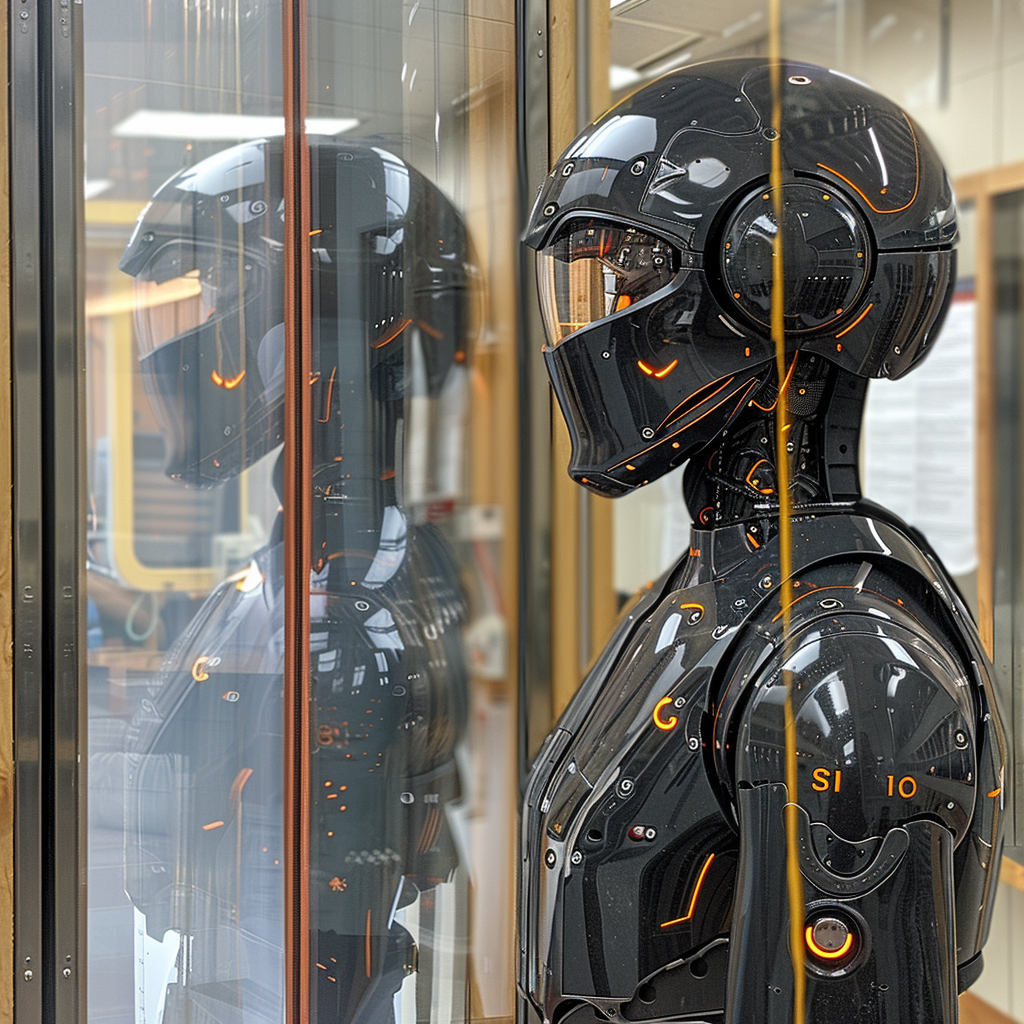1. Enhanced Decision Making
AI-powered RPA systems significantly boost organizational decision-making by moving beyond static, rule-based processes. These bots can analyze large datasets and learn from historical outcomes, allowing them to handle nuanced scenarios that previously required human judgment. This enhancement means RPA can support strategic business decisions in real time – for example, adjusting workflows or financial triggers based on predictive insights. Trends in the industry show a growing integration of machine learning into RPA, enabling bots to weigh probabilities and make choices (such as approving a loan or flagging a transaction) in a way that mimics human reasoning. The overall significance is a shift toward “intelligent automation,” where software robots not only execute tasks but also decide the best course of action under evolving conditions.

In fact, the adoption of AI for decision support is becoming mainstream. In a 2024 survey, 79% of companies reported they already use AI to assist in business decision-making. Business leaders overwhelmingly trust these tools – 96% acknowledge that AI improves the quality of their decisions. This confidence is backed by performance data: enterprises using AI-driven RPA have noted faster decision cycles and more consistent outcomes compared to manual processes. For instance, AI algorithms embedded in RPA can rapidly evaluate risk or market data, leading to more timely decisions in finance and operations. Such statistics underscore how enhanced decision making via AI in RPA is delivering tangible benefits at scale.
2. Improved Data Processing
By integrating AI, RPA bots can handle unstructured data types that were once beyond their reach. This development is crucial because modern businesses deal with emails, images, PDFs, and free-text documents as much as databases or spreadsheets. AI techniques like natural language understanding and image recognition allow RPA to interpret and classify this messy data, effectively widening the scope of tasks that can be automated. The trend is toward end-to-end process automation: for example, an AI-equipped RPA bot might read incoming email requests, extract key details, and update multiple systems without human help. Overall, improved data processing means RPA is evolving from a rules engine for structured inputs to a more flexible workforce that can digest information in the way humans do, but at digital speed.

The need for AI in data processing is evident from the sheer volume of unstructured information in enterprises. It’s estimated that about 85% of enterprise data is unstructured, comprising things like written documents, social media content, and scanned records. Traditional RPA struggled with this, as bots expect data in fixed formats. With AI-driven processing, organizations are now automating tasks such as invoice reading and forms processing that involve varied layouts and content. For example, insurance companies use computer vision to read accident images and documents, accelerating claims handling. Industry surveys highlight that managing unstructured data is a major challenge for 95% of businesses, so the rise of AI-enabled RPA directly addresses a critical pain point. By leveraging AI, businesses can tap into that 85% of data previously inaccessible to automation, improving efficiency and decision accuracy across the board.
3. Adaptive Learning
Adaptive learning refers to an RPA system’s ability to improve its performance over time without explicit reprogramming. Through machine learning algorithms, modern RPA bots can observe outcomes of their actions and adjust their future behavior. This makes automation far more resilient to change – for example, if a software interface or form layout changes, a learning-enabled bot might automatically relearn where to input data instead of failing outright. The significance here is reduced maintenance and oversight: companies spend less time updating bot instructions and more time benefiting from continuous operation. Trends indicate that “self-healing” RPA, which can detect when a process isn’t working optimally and correct itself, is becoming a reality. This adaptiveness is crucial as business environments and applications evolve rapidly; AI helps RPA keep pace by dynamically refining its own rules.

The push toward intelligent, learning RPA is reflected in rising investment and adoption of such technologies. By late 2023, an impressive 88% of organizations surveyed were actively planning or preparing to implement intelligent automation projects that leverage AI’s adaptive capabilities. This shows that most businesses recognize the value of RPA that can learn and improve. In practice, adaptive learning has yielded measurable gains: some companies report that machine learning-enhanced bots handle 20–30% more exceptions on their own after being in production for a few months. Moreover, industry analysts note that over 85% of enterprises intend to increase spending on intelligent automation due to these AI advancements in learning and adaptability. A real-world example can be seen in customer service automation – bots trained on past interactions learn to better recognize intent and sentiment, continuously upping their accuracy. Such statistics and trends underscore that adaptive learning is a cornerstone of the next generation of RPA.
4. Predictive Analytics
Embedding predictive analytics into RPA allows businesses to move from reactive to proactive operations. Instead of only handling tasks after they occur, AI-enabled RPA can forecast future events (like demand spikes, maintenance needs, or financial risks) and act in advance. This enhancement means an RPA bot might automatically order extra stock if it predicts a sales surge, or schedule equipment service before a breakdown happens. The trend is often referred to as “predictive automation,” combining historical data analysis, statistical models, and RPA action. Significantly, this can improve efficiency and reduce downtime because potential problems are addressed before they escalate. Across industries, we see RPA being paired with AI models – from predicting customer churn in telecom (and then triggering retention workflows) to forecasting loan defaults in banking (and executing pre-emptive account management tasks). Predictive analytics thus transforms RPA from a rule executor into a foresight-driven agent of business optimization.

The impact of this predictive capability is evident in operational metrics. For instance, AI-driven predictive maintenance in manufacturing (a common use of predictive analytics) can reduce unplanned equipment downtime by 5–15% and increase labor productivity by 5–20%. These improvements are substantial – less downtime directly saves costs and prevents production losses. In supply chain management, companies using predictive analytics to guide RPA have seen inventory carrying costs drop significantly, as the bots adjust procurement based on anticipated demand. The market for predictive analytics tools is also growing at over 20% annually, indicating strong confidence in forward-looking data use. Surveys show that organizations utilizing predictive insights in their processes are often more agile; for example, one study found decision cycles were 30% faster with real-time predictive data feeds. All these statistics reinforce that integrating predictive analytics into RPA is not just theoretically beneficial – it is yielding measurable returns in efficiency and performance for early adopters.
5. Natural Language Processing (NLP)
Natural Language Processing equips RPA bots to understand and generate human language, which dramatically expands what tasks they can automate. With NLP, RPA can read emails, interpret chat messages, converse with users via chatbots, or extract information from contracts and reports. The significance lies in bridging communication between humans and machines: AI-driven bots can now serve as virtual assistants, handling customer inquiries or employee requests in plain language. A key trend is the deployment of conversational AI in customer service – companies use NLP-enabled RPA bots to resolve common support queries, book appointments, or even draft personalized responses. This leads to enhanced efficiency (one bot can handle thousands of inquiries) and frees human staff for more complex interactions. Additionally, NLP allows RPA to perform sentiment analysis and content categorization, providing insights (like customer sentiment trends) as part of the automated workflow.
-0.jpg)
The prevalence of NLP in automation is rising swiftly, as shown by adoption statistics. A recent Ipsos survey found that 68% of U.S. consumers have used an automated customer service chatbot, illustrating how commonplace AI-driven conversational systems have become. Businesses are meeting this demand: about 74% of business owners say they expect AI (like chatbots) to handle customer queries and responses in the near future. The result has been measurable improvements in service speed and availability – companies report customer service response times dropping by over 30% on average when leveraging AI chatbots. Moreover, NLP isn’t confined to customer chat; it’s used for internal processes such as parsing emails or generating reports. In the banking sector, for example, AI text analysis is used to read loan applications and feed data into RPA workflows, cutting processing time drastically. The fact that by 2025 an estimated 95% of customer interactions will be powered by AI in some form underscores that NLP is a cornerstone of modern RPA, enabling bots to interact in human language and making automation more user-friendly and far-reaching.
6. Computer Vision
Computer vision technology allows RPA bots to visually interpret content – essentially “seeing” documents, images, or even live video and extracting useful information. This AI-driven improvement means RPA is no longer limited to text and numbers; it can process scanned forms, IDs, invoices, screenshots, or photographs as part of an automated workflow. The significance is enormous in industries like healthcare (reading medical records or X-rays), insurance (analyzing claim photos), and manufacturing (inspecting products via camera). A typical use case is invoice processing: a computer vision-enabled RPA bot can scan a PDF invoice, recognize fields like vendor, date, amount, and feed those into the accounting system automatically. The trend is that many organizations are adopting Intelligent Document Processing (IDP) platforms that combine OCR (optical character recognition) and AI. This not only reduces manual data entry but also cuts errors and speeds up processes that were once bottlenecked by paper or image data.
-1.jpg)
Statistics show rapid uptake of computer vision in enterprise automation. Over 60% of large companies have now implemented AI document processing solutions. In fact, 63% of Fortune 250 companies have deployed Intelligent Document Processing (IDP) tools to automate document-heavy workflows, with the financial sector leading at 71% adoption. This high adoption is driven by ROI: bots can process forms in seconds that took humans many minutes, at scale. Error rates also improve – modern OCR with AI can achieve over 90% accuracy in reading typed documents, dramatically reducing the need for human correction. The IDP market’s expansion (projected to grow roughly 30% annually through 2030) reflects the demand for vision-enabled RPA. Practical examples include banks using AI to verify handwritten signatures or extract data from loan applications automatically, and logistics firms automating cargo inspections using image recognition. These successes, along with the strong uptake statistics, underline how computer vision has become a game-changer for RPA, opening new frontiers for what tasks can be fully automated.
7. Process Mining and Optimization
AI-driven process mining involves analyzing system event logs to map out how processes actually flow and then identifying inefficiencies or bottlenecks. When combined with RPA, this creates a continuous improvement loop: AI finds the weak points or delays in a business process, and RPA can then be deployed to automate or streamline those specific parts. The significance of this improvement is that automation is no longer blind – it’s targeted and optimized. Organizations can use process mining tools to visualize, say, an order-to-cash process across thousands of transactions and pinpoint where most delays occur. The RPA can then be introduced at that juncture (for example, automating an approval step that slows things down). The trend is towards hyperautomation, where companies use AI insights to drive end-to-end automation of processes. In essence, AI provides the roadmap of what to fix or automate for maximal impact, and RPA is the mechanism that implements those fixes, resulting in far more efficient operations.

Because of its value, process mining adoption is accelerating fast. Gartner projects that by 2025, 80% of organizations will have embedded process mining capabilities in at least 10% of their business operations. This indicates a near-universal recognition that process understanding is key to successful automation. Already, about 61% of decision-makers say they are using or plan to use process mining tools to improve their workflows. The benefits are quantified in various case studies: companies using AI-based process analysis have uncovered inefficiencies that, when corrected with RPA, led to cost reductions of 30% or more in those processes. For example, a global manufacturer used process mining to discover redundant quality checks and then automated a streamlined set of checks with RPA, significantly speeding up production. Similarly, banks have cut loan processing times by finding and automating slow manual review steps. The data shows that organizations that leverage process mining achieve higher RPA ROI, as the automation is focused precisely where it yields the greatest improvement. This alignment of AI-driven insight with automation execution is why process mining and optimization is considered one of the top trends in RPA deployment today.
8. Error Reduction
Reducing errors has always been a selling point of RPA (robots don’t typo), but AI takes this to the next level by enabling bots to learn from mistakes and edge cases. Traditional RPA will repeat the same mistake endlessly if programmed incorrectly; AI-enabled RPA, however, can recognize anomalies or errors in its output and adjust accordingly. This improvement is especially critical in high-accuracy fields like finance, healthcare, or data management where even small errors can be costly. With machine learning, an RPA bot processing invoices could, for example, flag and learn from any invoice that required human correction, thereby not repeating the same error in the future. Another aspect is intelligent validation – AI can cross-verify data from multiple sources, catching discrepancies that a simple script might miss. The trend here is that AI is making automated processes more robust and reliable, turning RPA bots into quality-improvement agents within processes. Over time, the error rate of an AI-augmented RPA process can improve, whereas a purely rule-based process would remain at a static error rate.

Surveys underscore the strong impact of AI on RPA accuracy. In one global survey, 85% of organizations reported that their RPA initiatives met or exceeded expectations for non-financial benefits like accuracy, timeliness, and flexibility. This high satisfaction rate reflects how error reduction and quality improvements are being realized in practice. Financial services firms using AI-driven RPA have noted significant drops in error rates for tasks such as data entry and reconciliation – often decreasing error incidence by 50% or more compared to before automation. Moreover, AI can help detect process exceptions or failures in real time, allowing bots to either auto-correct or alert a human, thus preventing minor issues from compounding. For example, an AI-enabled RPA system in healthcare claim processing might automatically recognize if a claim form is incomplete and route it for review, rather than just inputting what’s there and causing downstream errors. Compliance metrics also improve: with fewer mistakes, companies face lower compliance risk and audit flags. All these outcomes tie back to error reduction, and they explain why 85% of executives in automation programs cite improved accuracy and quality as a key success metric achieved with AI-enhanced RPA.
9. Enhanced Customer Interaction
AI-driven RPA has transformed how companies engage with customers by enabling more complex, personalized, and responsive interactions without human intervention. This goes beyond basic chatbots (covered under NLP) to include automation of entire customer service processes. For example, an AI-enhanced RPA system can handle a customer’s loan application end-to-end: a chatbot collects information, an AI model assesses credit risk, and an RPA bot communicates the decision and next steps to the customer – all in a seamless flow. Enhanced customer interaction also means 24/7 service availability and faster response times, leading to better customer satisfaction. A key trend is the use of sentiment analysis and customer data by these systems to tailor interactions; an AI can gauge if a customer is frustrated and trigger an escalation to a human or a special retention workflow via RPA. In marketing and sales, RPA bots are engaging customers by sending timely, customized follow-ups based on AI predictions of what the customer might need. In sum, customer-facing processes that once required large support teams are now being augmented or handled by intelligent automation, maintaining a high level of service quality.

The benefits to companies and customers alike are reflected in quantitative results. Organizations that deploy AI in customer service operations have seen customer satisfaction scores rise while operational costs fall. According to a McKinsey analysis, adopting AI-driven customer service automation leads to an average 35% reduction in customer service operating costs, while simultaneously boosting revenue by 32% due to improved customer retention and upselling. These are striking figures – lower costs come from needing fewer live agents for routine issues, and higher revenue flows from faster service and personalized offers. Additionally, studies show AI chatbots can handle up to 80% of common queries, freeing human agents to focus on more complex issues, which improves staff efficiency and morale. It’s also reported that 90% of customers get issues resolved faster when AI is involved in the service loop, thanks to immediate answers and triaging. U.S. companies have noted higher Net Promoter Scores after implementing AI-based support, indicating customers appreciate the quicker, round-the-clock help. These statistics illustrate that enhancing customer interaction through AI in RPA is not just a tech upgrade – it has become a strategic move to improve customer experience and business outcomes in tandem.
10. Real-Time Decision Making
Real-time decision making is an AI-driven RPA capability where bots instantly act on live data streams and events, without waiting for human input or scheduled batches. This improvement is critical in scenarios like dynamic pricing (e.g., an e-commerce bot adjusting prices based on real-time demand and inventory), fraud detection (freezing a suspicious transaction as it happens), or supply chain logistics (rerouting shipments on-the-fly due to weather or traffic). AI models analyze incoming data in milliseconds and RPA executes the corresponding business response just as quickly. The significance here is agility and responsiveness – companies can adapt to changes or opportunities immediately, which is a strong competitive advantage. A trend contributing to this is the rise of IoT and streaming data in operations; organizations are deploying RPA agents at the “edge” to make snap decisions (for instance, an AI-equipped RPA system on a factory floor that instantly corrects a machine setting when sensor data goes out of range). Essentially, real-time decision making marries AI’s analytical speed with RPA’s action, closing the loop within seconds.

The business impact of real-time AI decisions is evident in performance improvements reported by adopters. According to IDC research, 79% of organizations that have embraced real-time analytics and decisioning saw improved business outcomes, including an average 15% increase in revenue within just one year. This is a powerful testament to the value of acting on data instantly – faster decisions capture opportunities (and mitigate losses) that slower processes miss. In retail, for example, companies using real-time pricing algorithms via AI have improved sales and margins by reacting to market demand immediately. Operationally, firms have shortened decision cycles by an estimated 30% when switching to real-time data-driven processes. Another survey found that 77% of businesses using real-time data report better financial performance year-over-year, underscoring the bottom-line impact of this capability. Industries like finance and telecommunications, which handle high volumes of streaming events, have been early adopters, using real-time RPA for things like instant credit approvals or network traffic optimizations. The statistics and trends consistently show that real-time decision making through AI-enhanced RPA enables organizations to be more proactive, responsive, and ultimately successful in fast-changing environments.